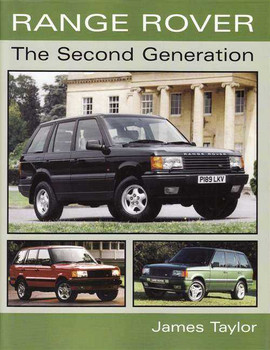Description
Author: Roger Crathorne, Geoff Miller, Gary Pusey, James Taylor, ISBN: 9781783180028, Softbound, 159 pages, b&w illustrations
Range Rover the First Fifty: Prototypes, YVBs and NXCs - The Story of the early Range Rovers
The story in detail of the 50 or so early Range Rovers that fell into three distinct groups: the Engineering Prototypes, the Pre-Production YVB-H models and the Press Launch NXC-H vehicles. Written by the foremost experts on the subject, it is essential
reading for enthusiasts and all who have an interest in this motoring legend.
Foreword:
Just before the middle of the 1960s, Rover engineer Spen King had the idea of creating a more driver-friendly Land Rover by using the long-travel coil-spring suspension from the latest Rover 2000 saloon in a multi-purpose estate-type body. He shared his ideas with his colleague Gordon Bashford, who was then the "package designer" in Rover's advanced engineering section (called New Vehicle Projects), and the two came up with a design that had a wheelbase of 99.5 inches. At Bashford's suggestion, they rounded it up to 100 inches.
Meanwhile, Rover's Managing Director, William Martin-Hurst, had commissioned a review of the company's markets world-wide. When that review was completed in 1965, it showed that the coming trend in the USA was for four-wheel-drive "leisure" vehicles — exactly the type of vehicle that the King-Bashford Land Rover 100-inch Station Wagon was intended to be. It was likely that other world markets would follow the US trend.
During 1966, a formal project was set up at Rover to develop the new vehicle, and by 1970 it was ready to enter production as the Range Rover. Top management at British Leyland, to which group Rover belonged from late 1966, was very enthusiastic about the new model and as a result it was launched rather earlier than the development engineers would have liked. One result of this was that development of US market derivatives was curtailed — and in fact the Range Rover did not reach the USA until 17 years later.
The basic design was so good that the vehicle immediately caught the imagination of the buying public. Rover-British Leyland UK (as it had become) spent most of the 1970s trying to keep up with world-wide demand. The original design was further developed in ways which its original designers could hardly have imagined, to become a prestigious luxury car as well as a formidably competent off-road vehicle.
Today, the Range Rover is a legend. The original design lasted in production for more than a quarter of a century; a second-generation model joined it in 1994; the third generation was announced at the end of 2001; and a fourth generation arrived in 2012. Enthusiasts and collectors alike recognise the importance of the vehicle — whose key attributes have been widely copied — in the history of motoring, and as a result there is strong interest in the very first Range Rovers.
It is those very first Range Rovers which are the subject of this book. Its aim is to record the story of the earliest vehicles before it becomes lost in the mists of legend and distorted by commercial misrepresentation. It looks at three distinct groups of vehicles. These are the Engineering Prototypes (of which there were seven), the Pre-Production Vehicles (of which there were 28, most registered in the YVB-H series), and the Press Launch Vehicles (of which there were 20, all registered in the NXC-H series). The total comes to slightly more than 50 vehicles, and — taking our cue from the King-Bashford "rounding" of the original layout drawing's wheelbase — we have called this book after it.
A lot of people have helped us gather the information in this book. Photographs have come from a great variety of sources, and we have done our best to acknowledge them in the captions. Special thanks must of course go to Jan Valentino at the British Motor Industry Heritage Trust in Gaydon, where most of the original factory photographs are kept.



















